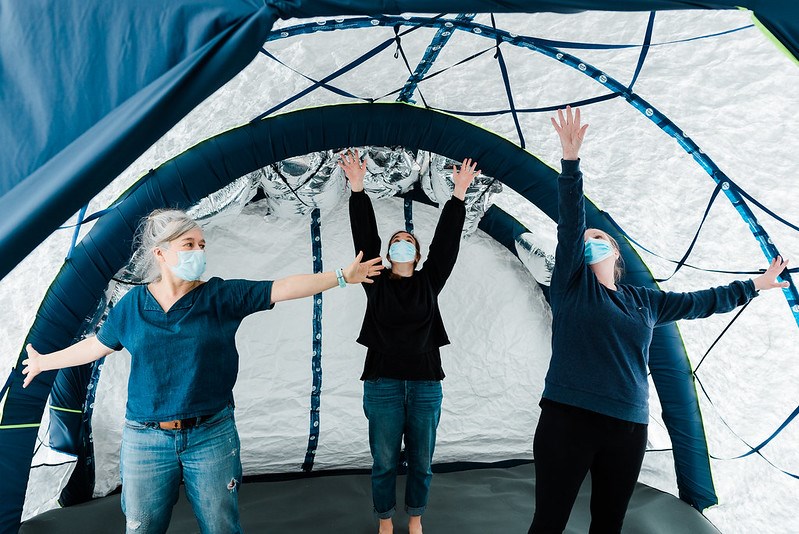Kwantlen Polytechnic students and instructors have created a special shelter for astronauts that could be used on future missions to the moon and Mars.
Created to be used inside “lava tubes” – hollow tubes that form after a volcano erupts, considered ideal protection for astronauts who are exploring in space – the students and staff members created the Extreme Cave Habitat One: ECHO.
The concept was to build a habitat with living and working space for a crew of three for two test missions to be used inside lava tubes, found on the moon and on Mars.
They were invited to create the shelter by EuroMoonMars, a collective of organizations that includes the European Space Agency.
The challenge was set by an Icelandic group with the acronym CHILL-ICE (Construction of a Habitat Inside a Lunar-analogue Lava-tube | Iceland Campaign of EuroMoonMars).
A team of 10 third-year students had seven weeks to work on the project, designing and constructing two full-scale prototypes that they presented remotely to the CHILL-ICE team.
Faculty designers then spent the last four weeks developing a third concept prototype that built on the work by the student team.
“We didn't sleep much,” said student Bailee van Rikxoort, the project manager. “We were the first ones at school and the last ones to leave, and we continued to work on the project once the school closed at night.”
The habitat is barrel-vaulted, with a single side door and weighs less the 30 kilograms. It offers about 40 cubic metres of living space to accommodate the crew.
The ECHO uses inflatable supports and shock-corded poles for structure and is deployable in two hours.
The habitat skin is constructed of Tyvek building membrane, a material chosen for being lightweight and economical.
Outdoor equipment companies Mustang Survival and MEC contributed specialty material, while design companies, such as Thin Red Line, contributed their expertise in design, technologies, materials and construction.
ECHO will be tested in Iceland in late July and early August, after which the Wilson School of Design team will receive feedback and maybe even design a habitat for a similar mission in Hawaii later this year.
The project will feature in a paper presented at the Lunar and Planetary Institute’s "Workshop on Terrestrial Analogs for Planetary Exploration" later this month. In October, ECHO will be presented at the 2021 International Astronautical Conference in Dubai.

.jpg;w=120;h=80;mode=crop)
